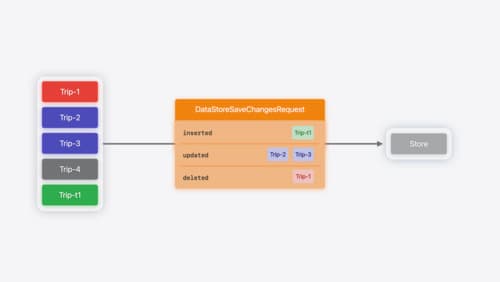swift data
Asked on 2024-07-31
7 searches
SwiftData is a framework introduced in iOS 17 that simplifies building your app's model layer and persisting it across launches. It provides features such as modeling, migration, graph management, and synchronization with CloudKit. Here are some key points about SwiftData:
-
Modeling and Persistence: SwiftData allows you to define your schema using a lightweight API. You can use the
modelmacro to define your models and further refine them with attributes and relationships. This makes it easy to persist data across app launches (What’s new in SwiftData). -
Custom Data Stores: By default, SwiftData uses CoreData for storage, but it also supports custom data stores. This means you can use alternative backends like SQLite, remote web services, or even JSON files. This flexibility allows you to use SwiftData's API with various storage formats (Platforms State of the Union).
-
Indexing and Unique Constraints: SwiftData has added new capabilities like the
indexanduniquemacros. Theindexmacro makes queries more efficient by indexing properties that are commonly queried together, while theuniquemacro ensures that certain properties have no duplicate entries (Platforms State of the Union). -
Customizing Model Containers: You can customize your model containers further with fully custom data stores. This allows you to use familiar SwiftData APIs regardless of the data format (What’s new in SwiftData).
-
Xcode Previews: SwiftData integrates well with Xcode previews, making it easier to develop and test your app's UI with real data. You can create custom containers for use with Xcode previews to enhance your development workflow (What’s new in SwiftData).
-
Query Optimization: SwiftData supports complex queries with filters and expressions, and the new
indexmacro can make these queries even more performant. This is particularly useful for apps with large datasets (What’s new in SwiftData).
For a deeper dive into these features, you can watch the sessions:

Create a custom data store with SwiftData
Combine the power of SwiftData’s expressive, declarative modeling API with your own persistence backend. Learn how to build a custom data store and explore how to progressively add persistence features in your app. To get the most out of this session, watch “Meet SwiftData” and “Model your schema with SwiftData” from WWDC23.

A Swift Tour: Explore Swift’s features and design
Learn the essential features and design philosophy of the Swift programming language. We’ll explore how to model data, handle errors, use protocols, write concurrent code, and more while building up a Swift package that has a library, an HTTP server, and a command line client. Whether you’re just beginning your Swift journey or have been with us from the start, this talk will help you get the most out of the language.

Platforms State of the Union
Discover the newest advancements on Apple platforms.
